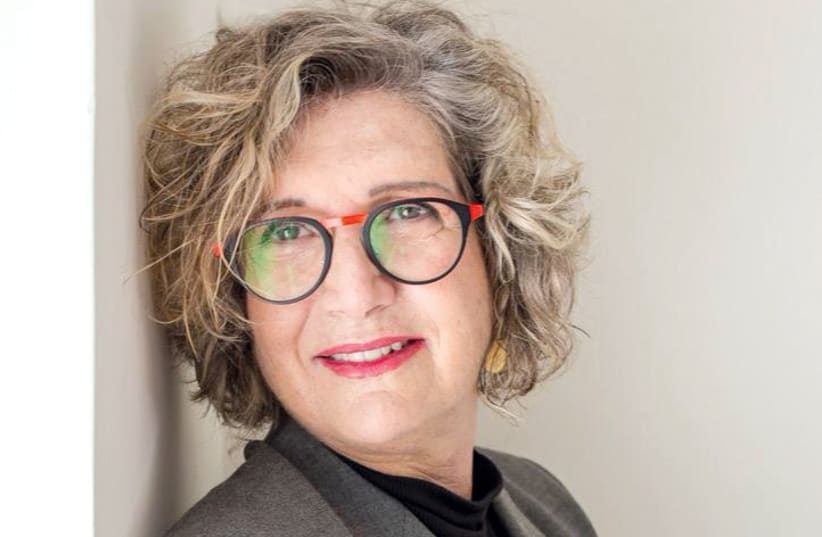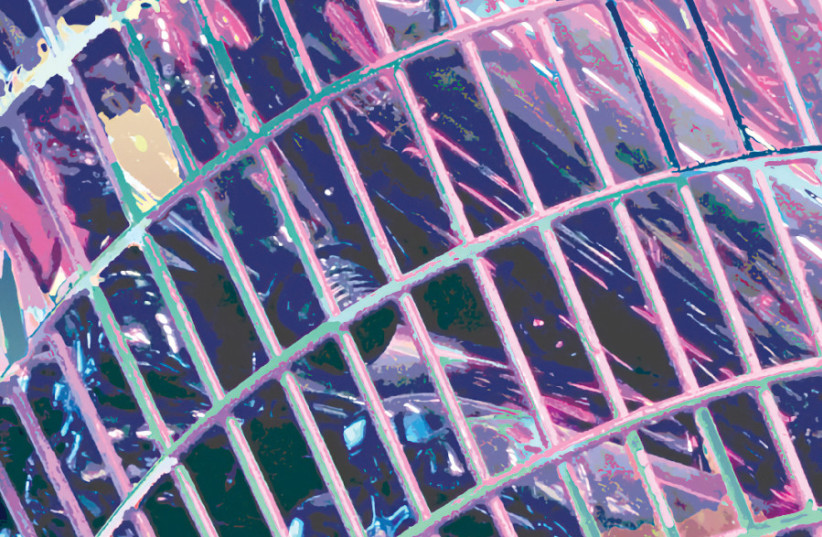With the blazing new world and the ever-increasing success of 20-somethings in the art world, it is refreshing to see an artist making a daring entry at a rather more advanced age. Yet as the saying goes, good red wine takes time to mature and indeed in the annals of the history of art, this usually is the case. This is understandable: depth requires the accumulation of experience, rather than simply a skillful hand and a witty mind.
To this end, the art of Rachel Portman Manor will be shown at the Frishman 46 Gallery in Tel Aviv in October and November. Rachel’s artwork is rational, emotional and evocative, and it promises to be an exhibition of high quality and depth of perception. In what follows, I shall justify why.
An exhibition of high quality and depth of perception
Rachel tells me she was quite precocious at school, and while this may have appeared as an ineptitude toward academia, it is more likely the development of a spirit that questions authority and allows for creative free thinking and personal exploration. Her background includes time at the Tel Chai art school where she studied graphic design. One of her teachers, she recalls, had been a student at the Bauhaus, and this may be memorable for the Bauhaus specifically attempted to make art socially relevant and connect the pure and the applied in a meaningful and utopian vision. This may have been the first influence that would later serve the artist’s lifelong fascination and understanding of materials.
Moreover, she has a background as an “architectural technician,” which serves to develop further her sensitivity for the material and the almost mystical quality that corresponds with a given material’s set of properties and propensities. Yet as an artist, she goes further than simply the material and physical reality.
For example, she explains, metal is extremely strong, and even if bent remains somewhat taunt or even unbreakable, hence the use of steel to reinforce concrete, the advent of which at around the turn of the last century was monumental and groundbreaking. It is these properties that she then connects to intuitively and emotionally, explaining that the self needs to be like metal and not break to the social forces or the winds of fortune. It is this backbone, if you like, that gives a person “the spirit, energy, will and opportunity to grow.” Ironically, she continues, the hardness and enduring permanence is the foundation upon which one can fly like “a butterfly going from flower to flower.”
The combined strength of solidity and fluidity is important if we are to navigate our path in life. While Rachel has been beset by tragedy and loss in her life as we all eventually encounter to varying degrees, so she sees adversity, frustration, anger, and loss as paradoxically the fuel to make of oneself something: “One has to be something with being,” she esoterically quips.
She further elaborates that one must almost prove one’s existence and enduring pain and loss, and I surmise, transforming memory, even painful ones, into an art form of aesthetic power and presence is the antidote and the mechanism through which one grows. Carrying the metaphor of “growth” further, she uses the word “fruits” to describe coming through the other side of the crucible and creating artworks.
I asked her whether the metaphor of the “butterfly,” “fruit” and “growing” applies to the inert, inanimate world of materials, and she lucidly articulated that the provenance, the very source of such materials, is indeed in the organic realm of nature, only later to be transformed through technology into steel, glass, iron, and wood in a usable form to build and construct. In this sense, nature and culture coalesce in the artist’s attentiveness to nature, building construction and its transformation into her art.
She denies the label “photographer,” preferring to rather call her medium and style simply creations. I think this is astute, as she is not working with the camera in a conventional way, but rather with the manipulation of the images using various computer software transforming the original source (much like buildings conceal their natural beginnings).
Focusing on the work itself: there is certainly a keen eye both for compositional unity and linear design. Rachel has managed to use the digital software to create images with surprising depth and layering; sensitivity to color and somehow both a painterly effect and draftsman-like precision.
In this sense, she combines both a rational appreciation of the logic of materials and an emotional depth where space for interpretation is conjured. One might say there is a sort of clinical clarity as well as an intuitive profundity. This is all the more surprising considering she does not work with a preconceived image in mind, but plays with the original image and software to create in much the same way a painter might use his or her palette and eye to render an image.
One almost gets the feel of a sort of color coding in her images, where she mutes certain areas of the image in the dual combination of black and white and then expertly allows more colorful dynamics to come into play.
Some of the work might be described as hyper-real, with neon-like colorations. Other aspects of her work are clearly abstract, never yielding to simply design. What I find most intriguing is that with this method she can give a sense of the visceral reality of a textured surface, which is difficult to achieve on a flat surface, and without, say, impasto paint or the sculptural.
Allowing such a dynamic, it makes sense that she is not “merely” a photographer as such, capturing arbitrary images on the move. Rather, the tangible quality and weight of materials: corrugated cardboard, MDF boards, stainless steel, cotton and paper are galvanized in an array of aesthetic modalities where the “photographs” exude a lively existence.
She explains that she aims to decontextualize her original images, and in that losing of the ”original,” she finds new harmonies and solutions. This is quite unique, for usually technological intervention undermines the creative hand or is merely useful for pragmatic ends.
The exhibition entitled “Capture” and curated by Ilana Cameli Lener will take place at the Frishman gallery number 46, opening on October 7 until the end of November. Her work will be printed on large scale on several carefully selected materials. The reason for the large scale is that it means that the exhibition is almost like an installation, and as she explained to me, the work can be appreciated from a number of angles and at various distances, which would not be the case on a smaller scale. The venue is the perfect space therefore, as its ceilings are unusually high, and furthermore it overlooks the sprawling, vibrant Tel Aviv urban area, testifying to the dynamic of city life and advanced material construction with its complex movement and energy, which corresponds to the pulse and vibrancy of the art itself.
It also means the confluence of the old and new that parallels a person’s web of history, trauma and hopefully positive transformation – of which her art is testimony.
Although this is her debut, it has been a lifetime in the making, culled from her awakenings in New York, where she had visited many of the galleries, and her various jobs over the years. The wine is now mature. Come and taste the art on offer. ■
The exhibition extends from October 10-November 30 at Frishman 46 Tel Aviv.
Curator: Ilana Carmeli Lanner; Artist: Rachel Portman Manor
For further information: Email Rachel@magicrach.com or go to www.magicrach.com

